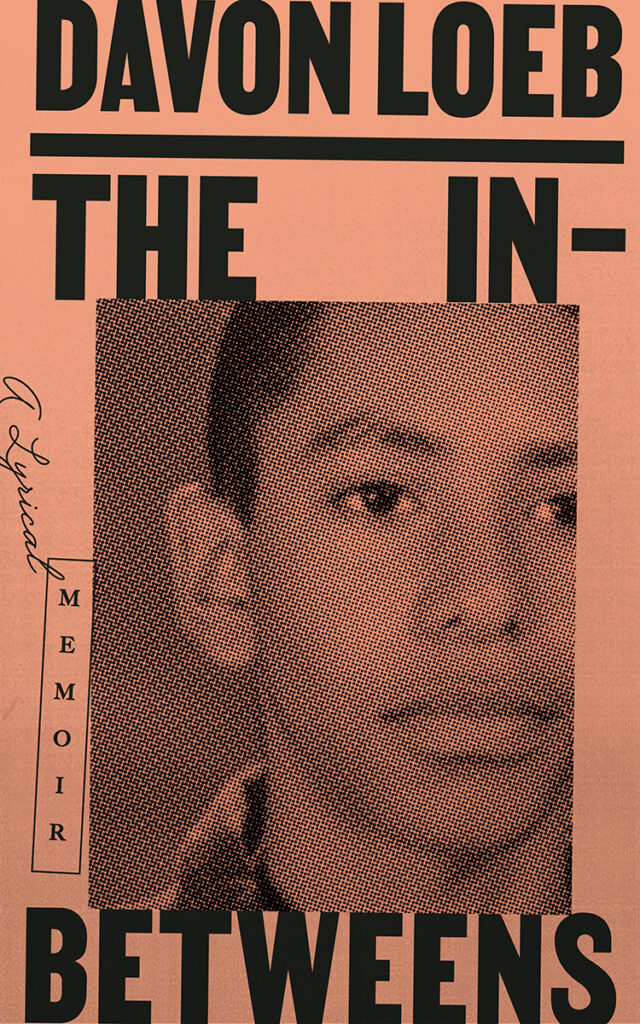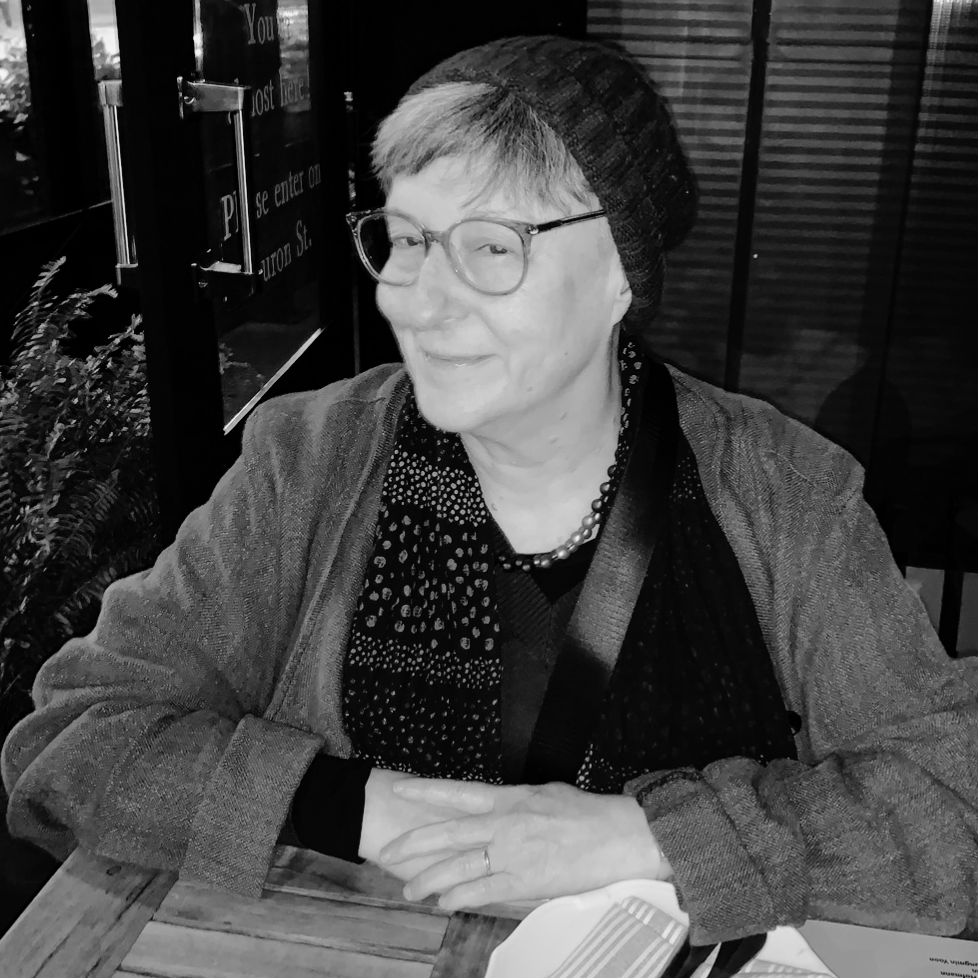A Review of Davon Loeb’s The In-Betweens
By Maud Lavin
The In-Betweens (WVUP, 2023) is Davon Loeb’s memoir of growing up as a biracial boy mainly with his Black mother, stepfather, and half siblings in the Pine Barrens, along with some summers in a small town in Alabama with his Black cousins, and infrequent visits with his white, Jewish father in northern New Jersey, New York City, and later Mt. Pocono. It’s a story told as a montage of fragments, and the structure does not miss; it’s a form well suited to the oscillations inherent in growing up Black and Jewish in an overwhelmingly white and Christian rural area.
Davon Loeb’s book is generous in its cascading prose and its gripping emotional range. Loeb shares the joys of being a boy in the vast New Jersey Pine Barrens—1.1 million acres of pine forests rooted in sandy soil in the southern part of the state—where, as he tells it, “we gathered on our bikes, an extension of our bones . . . looking and waiting to hit uncertainty, to spring off the dirt mounds—what we called The Jumps and what we needed and what we lived for—and when we did, like a band of motorcross bikers, when we found our front wheel aligned on one of those masses of rounded ground, we flew, our shadows cascaded, some sudden wings sprouted, and we shared those pieces of sky” (138). It is also generous in granular, uneasy honesty about the immersive everyday of rural race politics, as when he observes in his high school parking lot a visiting basketball team from far away arrive to see, “[m]ounted on one super-duty diesel waved a thirty-six inch Confederate flag. I watched, from the seat of my F-150, the brown and black faces of those boys from the other team as they walked over the pavement and stared in disbelief, in fear, in anguish. I felt that way too; I was angry. I was always angry, and ashamed that I’d gotten so used to it” (257).
In this tender, dislocating memoir, Loeb serves intensely lived scenes, rooted corporeal experiences, skinless emotions—and craft. That ecstatic quote about The Jumps, for instance, is the close of a two-page sentence, and as a reader I was so identifying with the author’s experience of losing himself in nature with friends, with remembering the Ohio marshes of my own childhood, that I didn’t even realize the virtuosity of the writing until I went back to check where the pieces of sky sentence had begun. I then got that the sensuality of the writing itself was a key part to what had carried me along—in this section inviting me to share the vivid pleasure, in other more challenging sections bringing me into the frightening experience of racism.
Loeb is giving with his insecurities. For instance, he writes about how his white classmates are eager to stereotype and partially include him as a Black boy good at sports, how much he wants to be good at sports, how lost he feels when it’s clear no matter how hard he tries he’s not. He wants hair—and more—like his older half-brother Troy, who has two Black parents; at an art supply store he looks up to his older half-brother Alex, who is white. He looks for models in his siblings, his friends, his action figures. But all is not consumed by a focus on his own evolution. Loeb is also generous in his portrayals of those he cares for, like the jolting onset and results of Alex’s schizophrenia, how it changes so much including Alex’s body, and the kindness of his workout friend Nicholas, who went to the gym with him at the Y and then later at the McGuire Air Force Base (where Davon’s mother worked). Although the arc of the book is beautifully crafted, these portrayals left me wanting even more. I want to know what his Black half-brother Troy is doing now and how his friend Nicholas is.
In Loeb’s next memoir—here I’m lobbying for him to write another—I want to hear more about his adult dealing with his Jewish heritage. In the In-Betweens, he admits that growing up, “I was always embarrassed to admit I was half Jewish, which sounds terrible, like admitting to having some disease. It was bad enough I was one of the only Black kids in our school, but to reveal being half Jewish meant I was going to be the Black Jew—a heritage of two of the most historically discriminated against people in the world. The litany of ridicule would never end” (185). Tapping into an anxious part of my white-Jewish, rural Ohio background, I’m sad to say I understand.
However, in a recent op-ed in the Los Angeles Times titled “How I learned to Embrace My Black and Jewish Heritage,” Loeb says “In the decades since visiting the Holocaust museum, since the passing of both my paternal grandparents, since the mending of my relationship with my father, I have continued to build my own links to my Jewish roots. I’ve studied the Hebrew Bible, learned about the genealogy of the ancient Hebrews, signed my best friend’s Jewish marriage contract, and now, hyphenate myself as a Black-Jewish American. . . . I am as much Jewish as I am Black. Being the Black Jew, a label I’d feared in school, was exactly who I was, who I am and who I want to be” (2022-11-14).
This progression from anxious evasion of his Jewishness to a resolute acceptance of it as much a part of his identity as Blackness is a story I—and many readers—would be graced by hearing.


Maud Lavin
Pushcart Prize nominee Maud Lavin has published recently in JAKE, Roi Faineant, Red Ogre Review, and Heimat Review, and earlier in the Nation, Harper’s Bazaar, and elsewhere. One of her books, CUT WITH THE KITCHEN KNIFE, was named a New York Times Notable Book. She lives in Chicago where she runs the READINGS series at Printers Row Wine in the South Loop.

One response to “Biracial in the Pine Barrens”
[…] and his book also appear in BOMB, Library Journal‘s Book Pulse, the Rumpus, Electric Lit, Reckon Review, the Offing, Debutiful, the Southern Review of Books, and the Substack from writer and […]